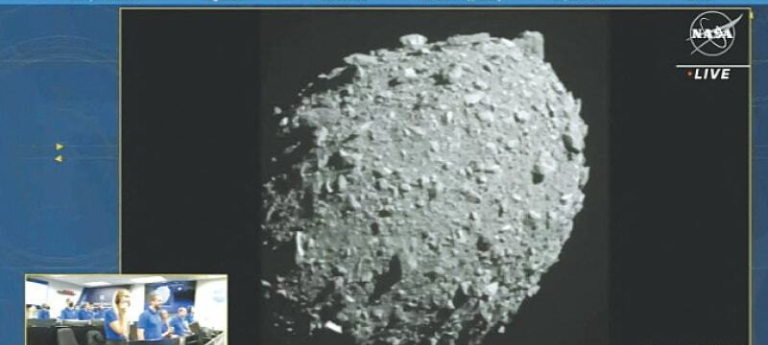Shrub: Nasa’s DART shuttle effectively banged into a far off space rock at hypersonic speed on the planet’s most memorable trial of a planetary safeguard framework, intended to forestall a potential Judgment day shooting star crash with Earth.
Mankind’s most memorable endeavor to modify the movement of a space rock or any divine body worked out in a Nasa webcast from the mission tasks focus outside Washington, DC, 10 months after DART was sent off.
The livestream showed pictures accepted by DART’s camera as the block formed “impactor” vehicle, no greater than a candy machine with two rectangular sunlight based exhibits, streaked into the space rock Dimorphos, about the size of a football arena, nearly 11 million kilometers from Earth.
The $330 million mission, exactly seven years being developed, was conceived to decide whether a space apparatus is equipped for steering a space rock through sheer motor power, poking it off base barely to the point of keeping Earth out of danger.
Whether the trial prevailed past achieving its planned effect won’t be known until additional ground-based telescope perceptions of the space rock one month from now. However, Nasa authorities hailed the prompt result of Monday’s test, saying the space apparatus accomplished its motivation.
“Nasa works to support humankind, so for us it’s a definitive satisfaction of our central goal to follow through with something like this — that’s what an innovation exhibit, who knows, some time or another could save our home,” Nasa Representative Chairman Palm Melroy, a resigned space explorer, expressed minutes after the effect.
DART, sent off by a SpaceX rocket in November 2021, made the majority of its journey under the direction of Nasa’s flight chiefs, with control gave over to an independent installed route framework in the last hours of the excursion.
Monday night’s bullseye influence was checked in close to continuous from the mission tasks focus at the Johns Hopkins College Applied Physical science Lab in Shrub, Maryland.
Cheers emitted from the control room as second-by-second pictures of the objective space rock, caught by DART’s installed camera, developed bigger and eventually filled the television screen of Nasa’s live webcast not long before the sign was lost, affirming the space apparatus had collided with Dimorphos.
The mission addressed an uncommon occasion in which a Nasa rocket needed to collide with succeed. DART flew straightforwardly into Dimorphos at 15,000 miles each hour, making the power researchers trust will be sufficient to move its orbital track nearer to the parent space rock.
APL engineers said the shuttle was probably crushed to pieces and left a little effect pit in the stone flung surface of the space rock.
The DART group said it hopes to abbreviate the orbital way of Dimorphos by 10 minutes yet would think about no less than 73 seconds a triumph, demonstrating the activity as a reasonable method to divert a space rock on a crash course with Earth, in the event that one were at any point found. A prod to a space rock a huge number of miles away years ahead of time could be adequate to securely reroute it.
Prior computations of the beginning area and orbital time of Dimorphos were mentioned during a six-day observable fact period in July and will be contrasted and post-influence estimations made in October to decide if the space rock moved and by how much.





